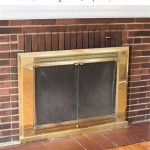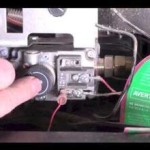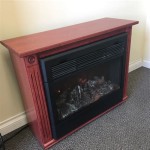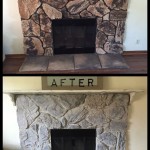What Do You Wash a Brick Fireplace With?
Maintaining a brick fireplace is crucial for both aesthetic appeal and structural integrity. Over time, soot, dirt, dust, and other deposits accumulate on the brick surface, leading to a dull or stained appearance. Knowing the appropriate cleaning agents and methods is essential to effectively remove these build-ups without damaging the brick itself. The selection of the cleaning solution often depends on the type and severity of the stain, as well as the type of brick used in the fireplace construction. This article will explore the various options available for cleaning a brick fireplace, outlining their efficacy and suitability for different cleaning needs.
Before commencing any cleaning procedure, it is vital to identify the type of stain present on the brick. Common types of stains include soot, creosote, efflorescence, and general grime. Soot and creosote are byproducts of burning wood and often manifest as black, oily residues. Efflorescence, a white, powdery deposit, arises from soluble salts within the brick migrating to the surface. General grime encompasses dust, dirt, and other airborne particles that accumulate over time. Understanding the type of stain will guide the choice of the most appropriate cleaning method.
Choosing the Right Cleaning Solution
Several cleaning solutions are effective for cleaning brick fireplaces, ranging from mild household detergents to more specialized chemical products. The best option will depend on the severity of the stain and the sensitivity of the brick. Here's a breakdown of some popular choices:
Dish Soap and Water: For lighter stains and general cleaning, a solution of dish soap and warm water can be surprisingly effective. The soap helps to loosen dirt and grime, making it easier to scrub away. This is generally considered the safest option for most brick types as it is non-abrasive and unlikely to cause damage. It’s important to use a mild dish soap and avoid those with harsh chemicals or strong fragrances.
Vinegar Solution: White vinegar is a natural cleaning agent with mild acidity, making it suitable for tackling some types of stains, particularly mineral deposits and light efflorescence. A solution of equal parts white vinegar and water can be sprayed onto the brick surface and allowed to sit for a few minutes before scrubbing. The vinegar helps to dissolve the mineral deposits, making them easier to remove. However, prolonged exposure to vinegar should be avoided as it can potentially etch or discolor some types of brick, especially those with lime-based mortar.
Trisodium Phosphate (TSP): TSP is a powerful cleaning agent effective for removing stubborn soot, grease, and grime. It is a highly alkaline compound that requires careful handling and protective gear, including gloves and eye protection. TSP is typically mixed with water according to the manufacturer's instructions. The solution is applied to the brick surface, allowed to dwell for a short period, and then scrubbed vigorously before rinsing thoroughly with clean water. Because of its potency, TSP is best reserved for heavily soiled fireplaces and should be used with caution to prevent damage to the brick or surrounding surfaces. Furthermore, TSP is not environmentally friendly and can be harmful to aquatic life, so proper disposal is essential.
Commercial Brick Cleaners: Numerous commercial brick cleaning products are available, formulated specifically for removing stains and dirt from brick surfaces. These products often contain a blend of detergents, solvents, and acids designed to dissolve and lift various types of stains. When using commercial brick cleaners, it is crucial to follow the manufacturer's instructions carefully and test the product on an inconspicuous area of the fireplace before applying it to the entire surface. This will help to ensure that the cleaner does not damage or discolor the brick. Always wear appropriate safety gear, such as gloves and eye protection, when handling these products.
Muriatic Acid: Muriatic acid is a highly corrosive acid that is sometimes used for removing severe stains and efflorescence from brick. However, it is also a very dangerous substance that can cause severe burns, respiratory irritation, and damage to the brick itself if not used properly. Muriatic acid should only be used by experienced professionals who have the necessary safety equipment and expertise to handle it safely. It is essential to dilute muriatic acid with water according to the manufacturer's instructions and to neutralize it after use with a solution of baking soda and water. Muriatic acid is generally not recommended for cleaning brick fireplaces unless absolutely necessary and only by trained individuals.
Preparing the Fireplace for Cleaning
Before applying any cleaning solution, preparing the fireplace is essential to ensure optimal results and protect surrounding surfaces. This involves several steps:
Clear the Area: Remove any decorative items, rugs, or furniture from around the fireplace to prevent them from being splashed or stained by the cleaning solution. Cover the floor in front of the fireplace with a drop cloth or plastic sheeting to protect it from drips and spills.
Remove Loose Debris: Use a brush or vacuum cleaner to remove any loose dirt, dust, or soot from the brick surface. This will help the cleaning solution to penetrate the stains more effectively.
Protect Metal Components: If the fireplace has any metal components, such as a fire screen or andirons, protect them from the cleaning solution by covering them with plastic or removing them from the area altogether. Some cleaning solutions can corrode or discolor metal surfaces.
Test the Cleaning Solution: Before applying the cleaning solution to the entire fireplace, test it on an inconspicuous area to ensure that it does not damage or discolor the brick. Choose a small, hidden spot, such as behind the mantel or near the floor, and apply a small amount of the cleaning solution. Allow it to sit for a few minutes, then rinse it off and observe the results. If the cleaning solution does not cause any adverse effects, it should be safe to use on the rest of the fireplace.
Ventilation: Ensure adequate ventilation in the room while cleaning. Open windows and doors to allow fresh air to circulate and prevent the build-up of fumes from the cleaning solution.
The Cleaning Process
Once the cleaning solution has been selected and the fireplace has been prepared, the cleaning process can begin. The following steps outline a general cleaning procedure:
Apply the Cleaning Solution: Using a sponge, brush, or sprayer, apply the cleaning solution to the brick surface. Start at the top of the fireplace and work your way down, ensuring that the entire surface is evenly coated. Allow the cleaning solution to dwell on the brick for the amount of time recommended by the manufacturer or as determined by testing. This will give the solution time to penetrate the stains and loosen the dirt and grime.
Scrub the Brick: Using a scrub brush with stiff bristles, scrub the brick surface to remove the stains and dirt. Apply firm, even pressure and work in small sections at a time. For stubborn stains, you may need to scrub more vigorously or reapply the cleaning solution.
Rinse Thoroughly: Once you have finished scrubbing the entire fireplace, rinse the brick surface thoroughly with clean water. Use a sponge or hose to remove all traces of the cleaning solution. It is important to rinse the brick thoroughly to prevent any residue from being left behind, which could attract dirt or damage the brick over time.
Dry the Fireplace: After rinsing, allow the fireplace to air dry completely. You can speed up the drying process by using a fan or opening windows to improve ventilation. Do not use a heat gun or other heat source to dry the fireplace, as this could damage the brick.
Inspect and Repeat: Once the fireplace is dry, inspect it for any remaining stains or dirt. If necessary, repeat the cleaning process until the brick is clean and free of stains.
Sealing (Optional): Application of a brick sealant can protect the clean surface from future stains and water damage, particularly for outdoor fireplaces or those exposed to high humidity. Choose a breathable sealant specifically designed for brick to avoid trapping moisture within the brick, which can lead to damage over time.
Properly cleaning a brick fireplace requires careful selection of cleaning agents and diligent application of cleaning techniques. By understanding the type of stain, preparing the area adequately, and following the appropriate cleaning process, one can effectively restore the fireplace to its original appearance without causing damage. Regular maintenance and prompt attention to stains will help to preserve the beauty and integrity of the brick fireplace for years to come.

How To Clean Internal Bricks On A Fireplace Sharn S House

Mortar Wash Brick Fireplace Makeover Dimples And Tangles

Whitewash Your Brick Fireplace With Limewash Paint Romabio

How To Clean Brick The Home Depot

Vane Cottage Chemical Brick Mortar Soot Cleaner 6

How To Whitewash Fireplace Brick Allisa Jacobs Home Design

How To Whitewash A Brick Fireplace Young House Love

How To Whitewash A Brick Fireplace Easiest Method For 2025

How To Clean Fireplace Bricks 9 Steps With S Wikihow

How To Whitewash A Brick Fireplace For Under 50 Her Heartland Soul
Related Posts








